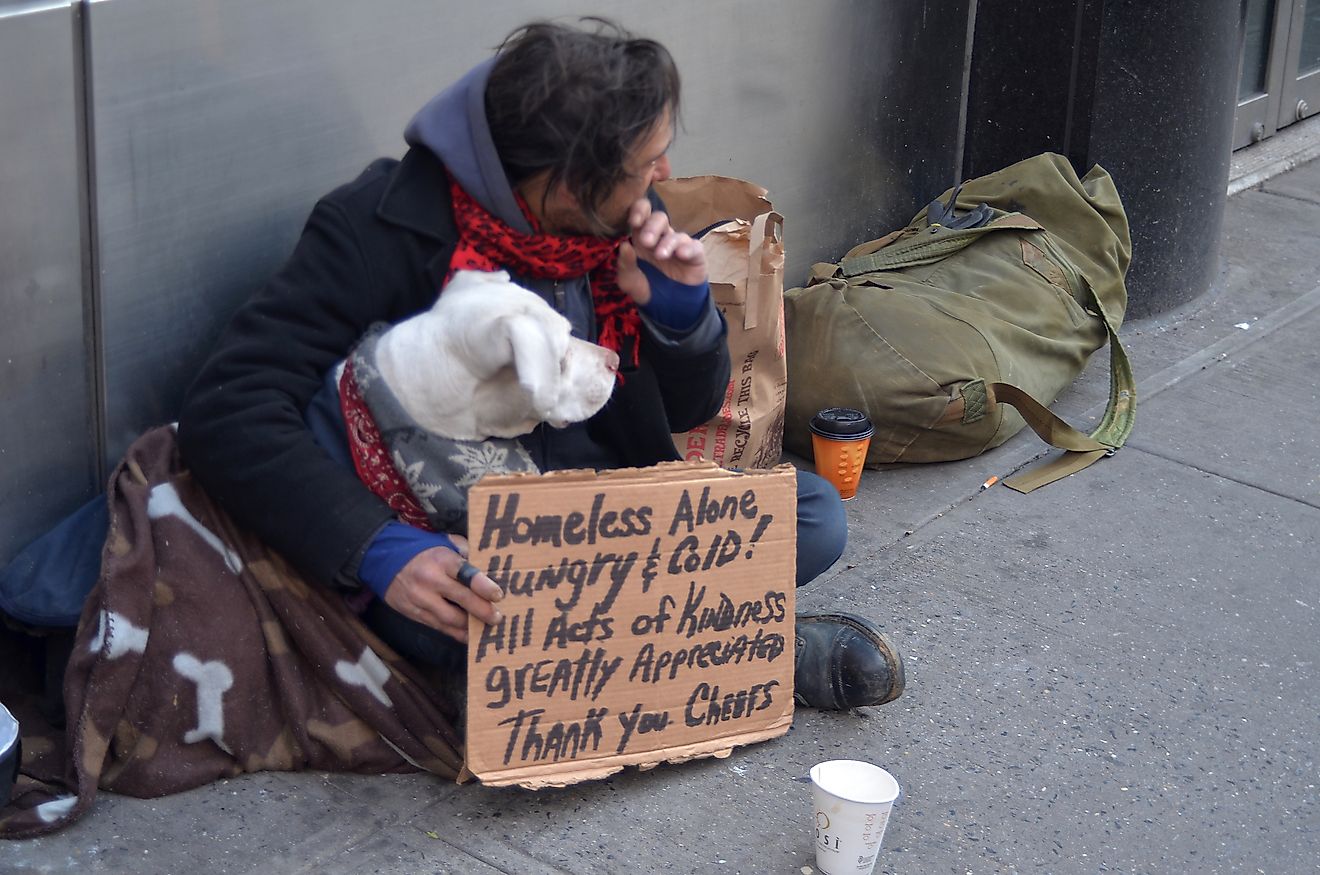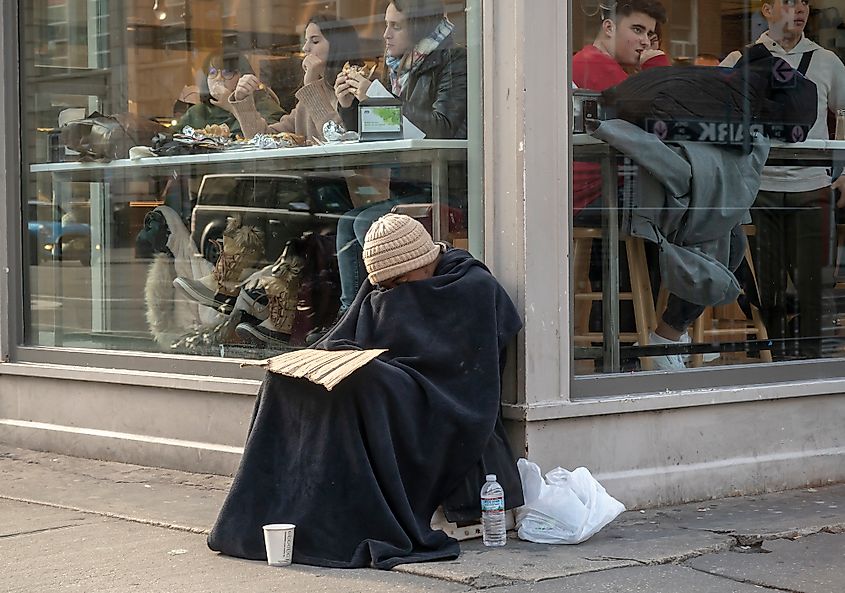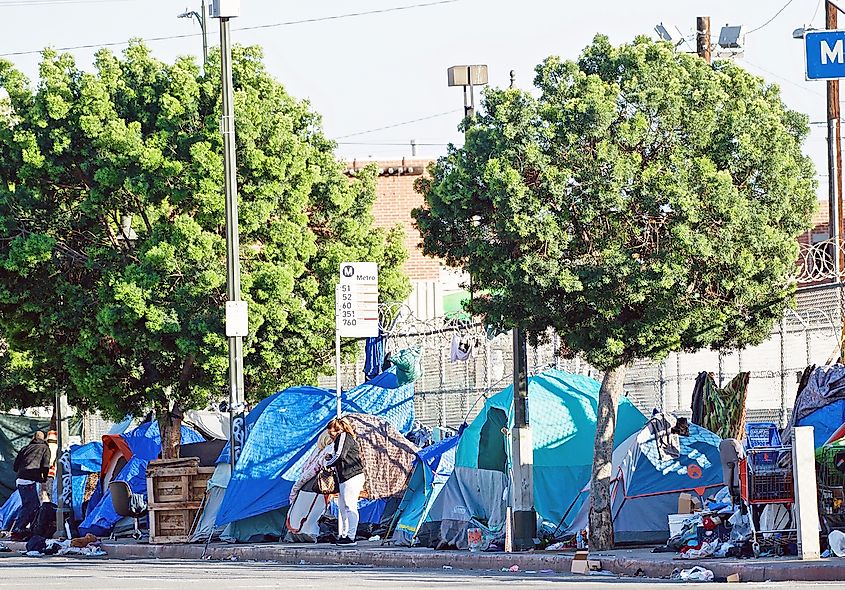How Many People Are Homeless In The US?

- About 65% of all homeless people in the US live in a shelter.
- In 2012, 8.4 million adult Americans suffered from both a mental health disorder and a substance abuse disorder.
- A person working full-time earning minimum wage n the US earns around $13,624 annually.
While the vast majority of Americans live in a shelter with four walls, a floor and a roof that they call home, not everyone is so lucky. Some people must sleep on the streets or in a homeless shelter, nightly.
According to the White House website, in January 2018, 552,830 were counted as being homeless but that number could be higher. Sources on Wikipedia state that, according to private state and local reports, upwards of 4 million people could now be homeless in the US.
While discrepancies exist, some general trends could prevail. Of the White House numbers, homeless people fell into two categories-those who were living on the streets-35% of homeless people- and those living sheltered but without a permanent home- 65% of homeless people.
What percentage do these numbers all add up to? According to WhiteHouse.gov, on any given night in the US, the general homeless population represents 0.2% of the entire population of the country.
If the numbers presented on Wikipedia as sourced from state and local reports on homeless are considered, about 1.2% of the entire US population is now homeless.
So, why do people end up homeless? Obviously, most of us would prefer to live within the comfort of a safe, comfortable permanent home. The reasons people can end up without a home are varied and can be complicated. They can include, but are not limited to, low incomes, joblessness, weak social ties, substance abuse, mental illness, and a history of incarceration.
Low Income And Joblessness

A small percentage of homeless people are on the streets because they just lost their job and can no longer pay their rent or mortgage. According to HomelessHub.ca, a larger portion of the homeless population is working, but does not earn enough to meet their rent needs.
According to the National Coalition for the Homeless, a full-time employee earning minimum wage in the US working 40 hours per week all year, would earn $13,624.
With the median monthly gross residential rent in the US being $1,012 in 2017, according to the Census ACS survey, it is easy to see how many working people end up homeless. In fact, anyone working for minimum wage full-time with two kids-a family of three- is nearly 25% below the US Department of Health and Human Services 2009 poverty level for a family of three.
Mental Illness, Substance Abuse And Incarceration

Suffering from an untreated mental illness is one route that lands people easily on the streets. It is estimated that up to one third of all homeless people suffer from a severe mental illness that makes it almost impossible for them to maintain a regular job and a healthy lifestyle, living on their own. Without the proper societal support, they can end up living on the streets or in homeless shelters.
Substance abuse is another factor that can result in homelessness, and it can go hand-in-hand with mental illness. According to the National Institute on Drug Abuse, it was found in a 2012 survey that 8.4 million adult Americans were suffering from both a mental health disorder, as well as a substance abuse disorder. It was also found that people suffering from severe mental illness were many times more likely to abuse substances. This group was four times more likely to abuse alcohol heavily. They were 3.5 times more likely to use marijuana regularly, and 4.6 times more likely to have used other drugs at least ten times in the course of their lives.
With a higher minimum wage, better diagnosis and support for mental health conditions and stronger community networks, as well as support for previously incarcerated people returning to lives outside prison, homelessness rates could go down.











